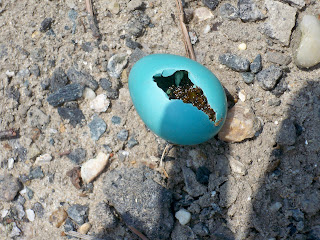Even when I’m not looking for them, I find exhortations and excoriations about place. I picked up Richard Ford’s Independence Day, for example, because I read a review of his new novel, Canada, which raved also about his earlier works. I had no idea that Independence Day would be laced with thoughts on houses and towns and their promises and deceptions, nor that the narrator, writer-turned-realtor Frank Bascombe, would muse often about real estate and belonging.
Here Frank compares his current residence in suburban Haddam, New Jersey, to his southern birthplace. “(Of course, having come first to life in a true place, and one as monotonously, lankly itself as the Mississippi Gulf Coast, I couldn’t be truly surprised that a simple setting such as Haddam — willing to be so little itself — would seem, on second look, a great relief and damned easy to cozy up to.)”
Later in the novel Frank totes up what he’s learned about belonging from “a patent lesson of the realty profession, to cease sanctifying places — houses, beaches, hometowns, a street corner where you once kissed a girl, a parade ground where you marched in line, a courthouse where you secured a divorce on a cloudy day in July but where there is now no sign of you, no mention in the air’s breath that you were there or that you were ever, importantly you, or that you even were. We may feel they ought to, should confer something— sanction, again — because of events that transpired there once; light a warming fire to animate us when we’re well nigh inanimate and sunk. But they don’t. Places never cooperate by revering you back when you need it. In fact, they almost always let you down. … Place means nothing.”
Frank doesn’t waver in his opinion at the end of the novel, either. No sentimental backtracking for him: “It’s worth asking again: is there any cause to think a place — any place — within its plaster and joists, its trees and plantings, in its putative essence ever shelters some spirit ghost of us as proof of its significance and ours? No! Not one bit! Only other humans do that, and then only under special circumstances…”
I don’t completely agree with Ford, but he makes a persuasive case.


